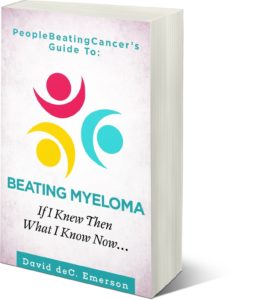“That was Lucius Seneca, the ancient philosopher of Stoicism,” he said, laughing. “Look, it takes great courage to live as if each day counts. That was a fundamental insight of Stoicism. But we Christians are a people who must live into the future.” I had no idea what he meant. The future was a cliff.
Worried I would not have a future, I tried to live without one. I sowed myself into the moment with its needles and white blood cell counts, diaper changes and grocery pickups. But even as I resolved to keep myself in the present, the future kept interrupting. I was scrambling to find my son, Zach, a larger onesie or discovering that Christmas had now become the season of “Please don’t pull that off the tree.” I finished the book I never thought I would see published, and I drove my 70-year-old father to a re-creation of Noah’s ark in Kentucky simply to amuse him. The heavens wheeled and the seasons turned as we were pulled beyond the everlasting moment.
The Stoics considered time to be cyclical, an eternal recurrence of motion from fire through the creation of elements back to fire again; the Enlightenment saw time as the arena of progress, a moral motion toward improvement and perfectibility. Much of Christian theology rests on the image of God as the ultimate reality beyond time and space, the creator of a past, present and future where all exists simultaneously in the Divine Mind. But where does that leave the bewildered believer who cannot see the future and whose lantern casts light only backward, onto the path she has already taken?
Approaching the new year, I wondered how I might renew hope for a future I can no longer see. So I rummaged around for inspiration in well-used daily planners and to-do lists, only to discover a stack of cards I had intended to mail long ago. Thank you for reintroducing me to tuna casserole. Thank you for inviting Zach to make a maze out of boxes. Yes, my dog often licks the television and thank you so much for taking him. There were photos that friends had hung by my bed of our last (surprisingly violent) round of Mennonite board games and of my misguided attempt to take my cello Christmas caroling. Someone had framed an image of Zach, grinning on my lap, my chemotherapy fluids hidden by a series of elaborate sock puppets we had created.
The terrible gift of a terrible illness is that it has in fact taught me to live in the moment. But when I look at these mementos, I realize that I am learning more than to seize the day. In losing my future, the mundane began to sparkle. The things I love — the things I should love — become clearer, brighter. This is transcendence, the past and the future experienced together in moments where I can see a flicker of eternity.
So instead of New Year’s resolutions, I drew up a list for 2019 of experiences that had already passed: a record not of self-mastery but of genuine surprise. 1. My oncology nurse became a dear friend. 2. Even in the hospital I felt the love of God. 3. Zach is under the impression that I never get tired. These are my small miracles scattered like bread crumbs, the way forward dotting the path behind me.”
End-Stage Multiple Myeloma- Opdivo (Selinexor), Dexamethasone
“This proved that the drug (selinexor) worked in multiple myeloma patients who had exhausted every other treatment (MDR) and who would have been placed on hospice care otherwise.”
End stage multiple myeloma is, by definition, when a MM patient reaches multi-drug resistance (MDR). Basically, if you’re a mm patient who has tried and failed all other FDA approved MM therapies then you MM grows until you die.
According to the study linked below, about 40% of MM patients responded to selinexor. Of those who responded, approximately 25% “signficantly knocked down” their MM.
Recommended Reading:
“This trial tested selinexor with dexamethasone, a combination that significantly knocked down the cancer in more than a quarter of patients, including two patients who went into complete remission… This therapy caused at least a minimal response in almost 40 percent of patients who had multiple myeloma, a cancer of a type of white blood cell called a plasma cell.
“This study proved that a novel, first-in-class drug with a new mechanism of action can kill a patient’s cancer cells,” said the study’s senior author…”This proved that the drug worked in patients who had exhausted every other treatment and who would have been placed on hospice care otherwise.”
The clinical trial, called the STORM Part 2 Study, studied the response of 122 patients taking selinexor and dexamethasone, both oral drugs, in trials across the United States and Europe. Mount Sinai enrolled a quarter of the patients in the international study.
Patients generally saw a response to the drugs within one or two months. While there was no organ toxicity, side effects included low blood count without bleeding, nausea, vomiting, lack of appetite or fatigue.
“This study is meaningful for patients with multiple myeloma who haven’t had success on multiple other therapies…” “An increasing number of patients have resistance to the standard drugs used in the treatment of multiple myeloma, and the overall survival in these patients is short, sometimes less than three months.”
Selinexor is also being investigated in multiple myeloma in combination with other approved multiple myeloma drugs as well as in other malignancies such lymphoma and ovarian cancer…”




